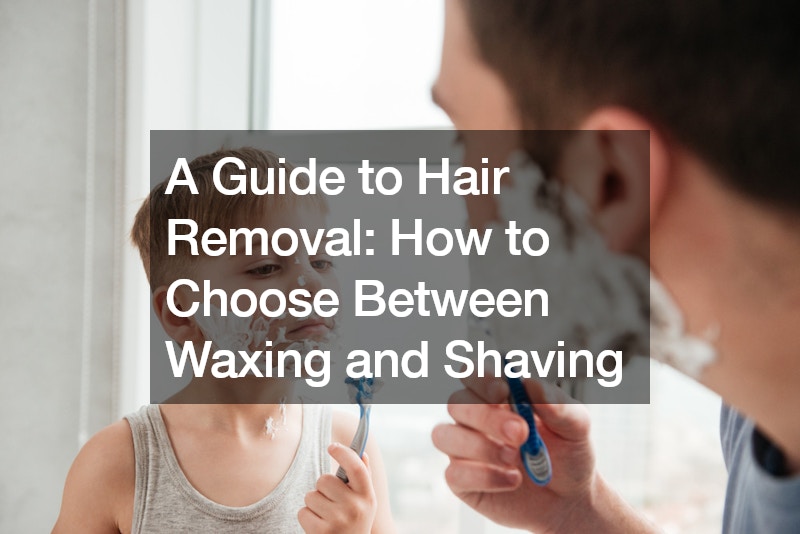Hair removal is a common practice for many people seeking smooth and hair-free skin. Among the various methods available, waxing and shaving stand out as two popular options. Each method has its own set of pros and cons, making it essential to understand the differences to choose the best one for your needs.
Understanding Waxing
Waxing is a hair removal technique that involves applying a layer of wax to the skin and then removing it along with the hair. There are two main types of waxing: hot waxing and cold waxing.
Hot waxing entails melting the wax and applying it to the skin, while cold waxing involves using pre-made strips applied directly to the skin. While waxing is known to be more painful than shaving, it offers longer-lasting results because it removes hair from the root. Many individuals opt for waxing services provided by professionals for more effective and thorough hair removal.
Pros:
1. Long-lasting results: Waxing removes hair from the root, resulting in smoother skin that lasts longer than shaving, typically up to several weeks.
2. Reduced hair regrowth: Over time, waxing can lead to finer, sparser hair regrowth, making subsequent treatments easier and less frequent.
3. Exfoliation: Waxing provides mild exfoliation, removing dead skin cells and leaving the skin feeling smoother and softer.
4. Precision: Waxing allows for precise hair removal, making it suitable for shaping eyebrows or achieving clean lines in areas like the bikini line.
5. Fewer ingrown hairs: Waxing reduces the likelihood of ingrown hairs compared to shaving, as it removes hair from the root rather than cutting it at the surface.
Cons:
1. Painful: Waxing can be more painful than shaving, particularly for individuals with sensitive skin or in areas with dense hair growth.
2. Cost: Professional waxing services can be expensive, especially for full-body treatments or regular maintenance sessions.
3. Risk of irritation: Waxing may cause temporary redness, inflammation, or minor irritation, although these effects usually subside within a few hours.
4. Not suitable for all hair types: Waxing may not effectively remove very fine or short hair, requiring longer hair lengths for optimal results.
5. Potential for ingrown hairs: While less common than with shaving, waxing can still lead to ingrown hairs, particularly if proper aftercare and exfoliation are not maintained.
Exploring Shaving
Shaving, on the other hand, is a quick and straightforward method of hair removal that involves using a razor to cut the hair at the skin’s surface. Various types of razors are available, including disposable razors, electric razors, and safety razors. Shaving is less painful than waxing but has its drawbacks. The hair tends to grow back quickly, usually within a few days, and there is a risk of nicks, cuts, and razor burn. However, shaving can be easily done at home using shaving cream, gel, or foam.
Pros:
1. Convenience: Shaving is quick and easy, making it a convenient option for removing unwanted hair, especially in areas like the legs and underarms.
2. Accessibility: Razors and shaving products are widely available and relatively inexpensive, allowing for at-home hair removal without the need for professional assistance.
3. Painless (usually): Shaving is generally painless when done correctly, although there is a risk of nicks, cuts, and razor burn if not performed carefully.
4. Suitable for sensitive skin: Shaving can be a gentler option for individuals with sensitive skin who may find waxing too harsh or irritating.
5. Versatility: Shaving can be done on various parts of the body and is suitable for both men and women.
Cons:
1. Short-lasting results: Hair regrowth occurs quickly after shaving, usually within a few days, resulting in the need for frequent maintenance.
2. Potential for ingrown hairs: Shaving can increase the risk of ingrown hairs, especially in areas with thicker hair growth or curly hair.
3. Risk of razor bumps: Some individuals may experience razor bumps or folliculitis, particularly in areas prone to friction or moisture.
4. Skin irritation: Shaving can cause skin irritation, redness, and itching, particularly if not done with proper technique or using dull razors.
5. Limited effectiveness: Shaving only removes hair at the surface level, leaving behind stubble and resulting in a less smooth finish compared to waxing.
Comparing Waxing and Shaving
When deciding between waxing and shaving, several factors come into play. Firstly, consider your pain tolerance. Waxing is generally more painful than shaving due to the hair being pulled from the root. However, the results last longer, making it a preferred choice for individuals seeking longer-lasting smoothness. Additionally, consider your budget. Waxing services can be more expensive, especially if done professionally, whereas shaving is a more cost-effective option.
Another factor to consider is the duration of hair removal. If you prefer smooth skin for an extended period, waxing may be the better choice, despite the initial discomfort. On the other hand, if you need to remove hair quickly or prefer a less painful option, shaving is a viable solution. Ultimately, the choice between waxing and shaving depends on personal preference and individual needs.
Conclusion
Both waxing and shaving are effective methods of hair removal, each with its own set of benefits and drawbacks. Waxing offers longer-lasting results but can be more painful and expensive. Shaving, on the other hand, is quick, easy, and budget-friendly but requires more frequent maintenance. Whether you opt for waxing services or prefer the convenience of shaving at home, choose the method that best suits your lifestyle and preferences for smooth, hair-free skin.
.

